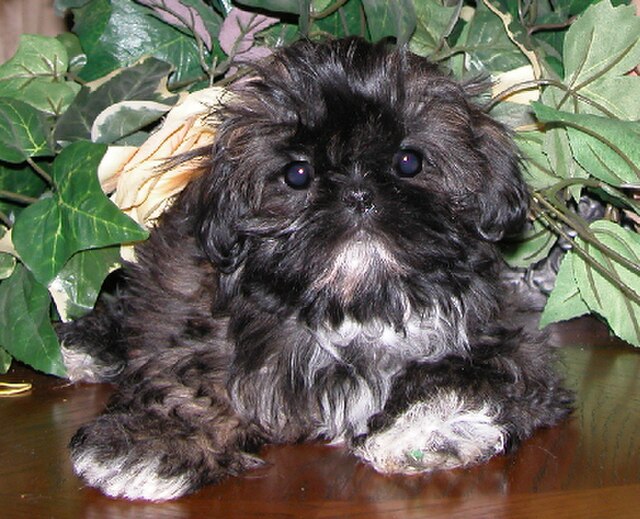


The Chinese Imperial Dog is a small, affectionate toy breed that is known for its delicate appearance and lively personality. These dogs are often compared to the Shih Tzu and the Pekingese due to their similar looks, but the Chinese Imperial Dog is generally smaller and more refined. They are friendly, playful, and devoted to their families, making them excellent companions for those who can give them the attention they need. Despite their small size, they have a big personality and are known to be lively and sometimes independent, requiring gentle guidance and care from their owners.
The Chinese Imperial Dog, also known as the Imperial Shih Tzu, has a long history that traces back to China, where it was originally bred as a companion for the Chinese Imperial family. These small dogs were highly valued by the royal family and were often kept by the emperor’s court, particularly for their status as lap dogs. They were also considered lucky and were often pampered and cared for in the palace. It is believed that the breed is related to the Shih Tzu, but the Chinese Imperial Dog is a smaller version. The breed was kept in secrecy for centuries, and it wasn't until the 20th century that they began to be bred outside of China. Today, the breed is recognized by several smaller kennel clubs and is admired for its elegance and friendly demeanor.
The Chinese Imperial Dog is a small, sturdy toy breed, typically standing around 8 to 10 inches tall at the shoulder and weighing between 4 to 10 pounds. They have a compact and graceful body with a well-balanced appearance. Their coat is long, silky, and flowing, often requiring regular grooming to keep it looking its best. The coat can come in a variety of colors, including gold, black, white, and cream, and may have different combinations of these colors. They have a distinctive flat face with large, dark eyes that give them an expressive and affectionate look. The breed has a short, rounded muzzle and a tail that is often carried over the back in a gentle curl. Despite their small size, they possess an alert and confident stance, often with a calm yet lively demeanor.
The Chinese Imperial Dog is known for its sweet, affectionate, and playful temperament. These dogs are highly social and enjoy spending time with their family, making them excellent companions. They are generally good with children and other pets, although they can sometimes be a bit reserved around strangers. Due to their strong bond with their owners, they thrive in homes where they are given a lot of attention and interaction. While they are not known to be overly vocal, they can be alert and protective when it comes to their home and family, making them suitable watchdogs despite their small size. Chinese Imperial Dogs are also known for being independent at times, so consistent training and boundaries are important to help them behave well in various situations.
While the Chinese Imperial Dog is a small breed, it still requires regular exercise to stay healthy and maintain a good weight. Daily walks, playtime, and some indoor activities will suffice to keep them active and stimulated. Due to their small size, they do not require as much exercise as larger breeds but still enjoy running around and playing indoors or in a safely enclosed outdoor area. Mental stimulation is just as important as physical activity for this breed, and they enjoy interactive toys and games that challenge their minds. Because they are a companion breed, they enjoy being close to their owners during activities and should not be left alone for extended periods. Providing variety in their activities will help prevent boredom and keep them happy and healthy.
The Chinese Imperial Dog is intelligent and eager to please, which makes training possible with positive reinforcement methods. However, due to their sometimes independent nature, they may need extra patience during training sessions. They respond well to gentle guidance, treats, and praise. Early socialization is important to ensure that they are comfortable with other animals, strangers, and various environments. Exposing them to a wide range of people, animals, and experiences will help them develop into well-rounded and confident adults. This breed can sometimes be a bit stubborn, so owners should be consistent and persistent in training efforts. Socialization also helps curb any tendency to become overly protective or shy around unfamiliar people.
The Chinese Imperial Dog is generally a healthy breed with a lifespan of 12 to 15 years, but like many small breeds, it can be prone to certain health issues. Some common health concerns include dental problems (such as tooth decay), hip dysplasia, and respiratory issues due to their short snout. Regular dental care, such as brushing their teeth, is essential to prevent oral health problems. Additionally, this breed’s long coat requires regular grooming to prevent mats and tangles, especially around the ears, paws, and underbelly. They should also have regular eye and ear checks to maintain their health, as their flat face can be prone to tear staining and ear infections. As with all breeds, regular vet check-ups and vaccinations are important for maintaining their overall health.
The average lifespan of a Chinese Imperial Dog is between 12 to 15 years, although some may live longer with proper care. Ensuring a healthy diet, routine exercise, and regular vet visits can help extend their lifespan. This breed is generally hardy, but as a small dog, it can be more susceptible to certain health issues, so maintaining a proactive approach to their health is key to a long, happy life.
© copyright Dog Compendium 2024 - 2025